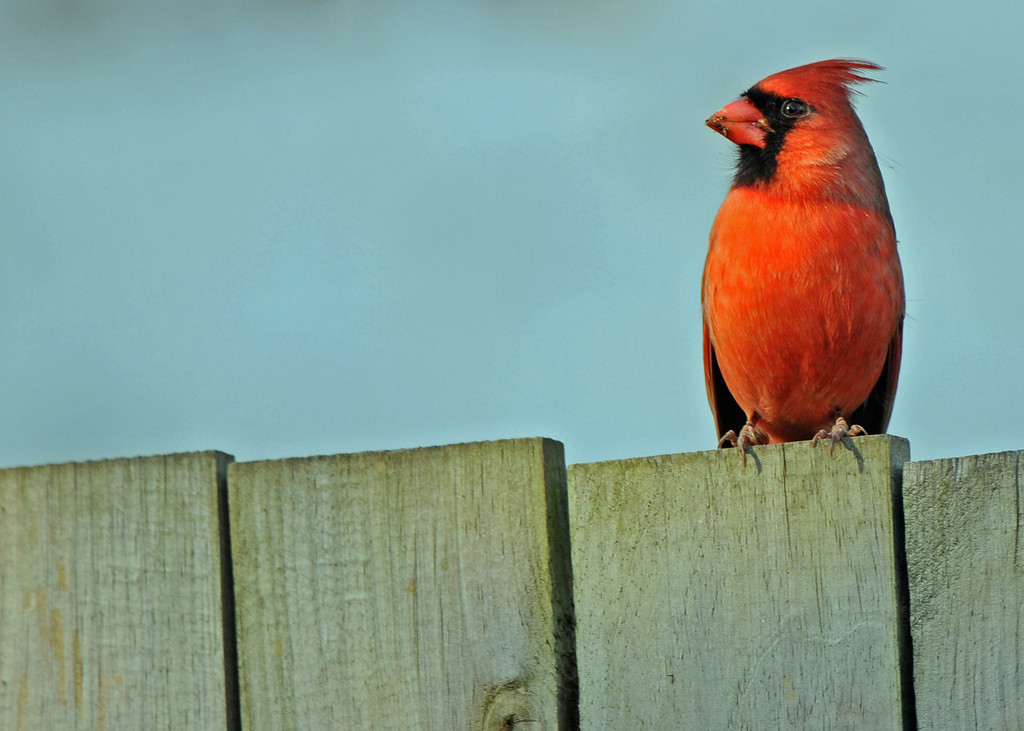Northern Cardinals are always a pleasure to see, especially in winter when most of the red-coated things that we see are people and trucks. These birds are called Cardinals because the male’s plumage is the color of the characteristic vestment of Catholic Cardinals, as you can see below.
The feathered male Cardinal, however, is not very priest-like when it comes to defending his territory from other males – he’ll even hurt himself by viciously attacking his own reflection for hours. There is a sweet side: unlike many bird species in which only males sing, male and female Cardinals sing to each other. Here's a female Northern Cardinal:
(Brooklin, Maine)































































